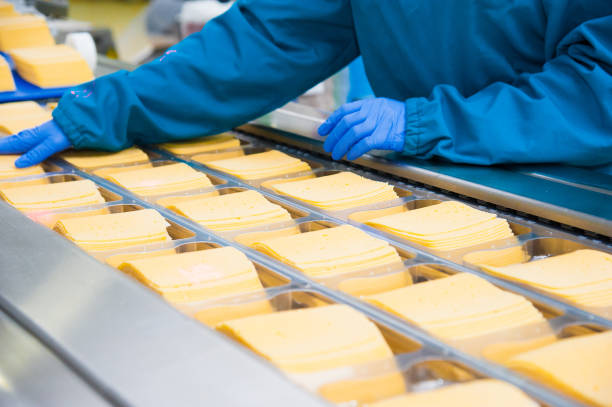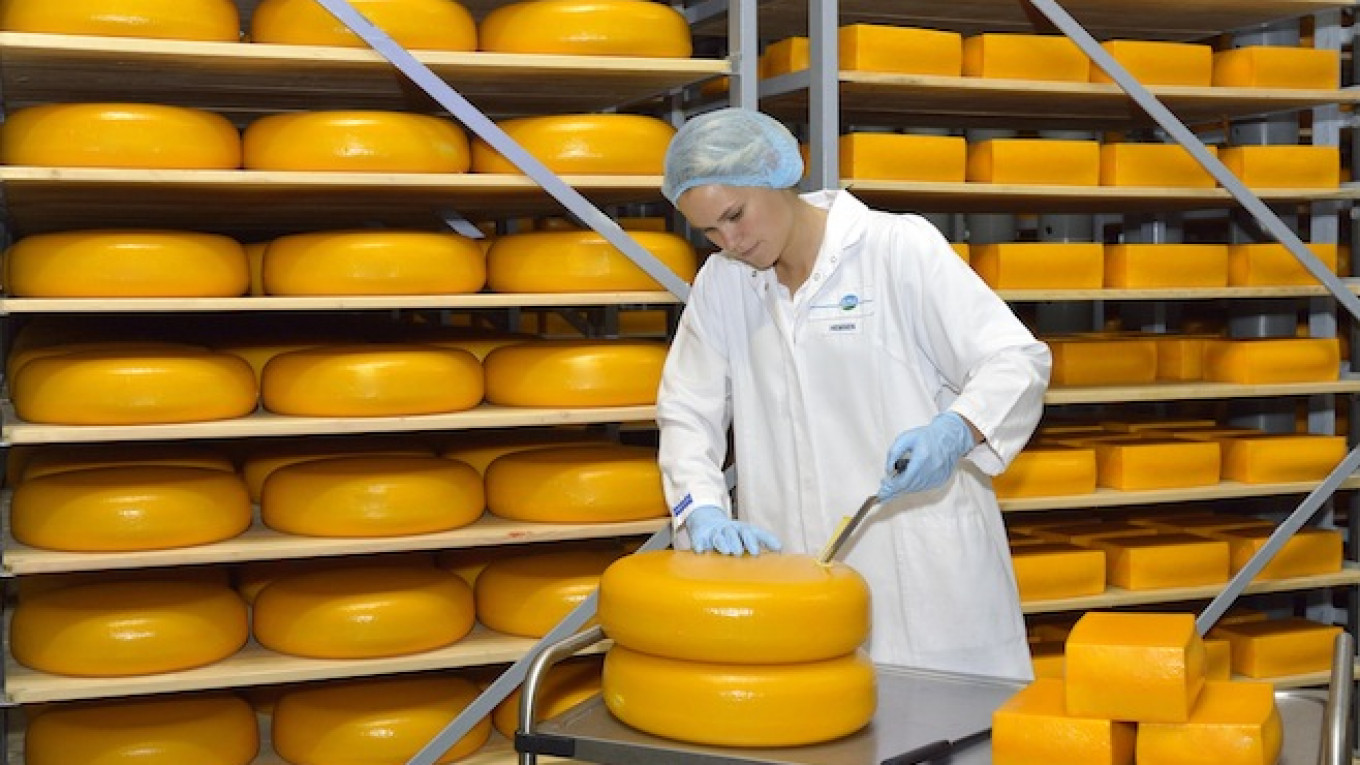A Comprehensive Guide to Cheese Manufacturing: Actions, Obstacles, and High Quality Control Actions
Cheese manufacturing is a complex process that calls for careful attention to information, from the first selection of high-quality milk to the final phases of manufacturing. As we check out these aspects, it ends up being clear that the future of cheese production will certainly be formed by progressing fads and technologies that might redefine typical practices.

Introduction of Cheese Production
Cheese manufacturing is a complicated procedure that transforms raw milk right into a varied variety of dairy items, each with one-of-a-kind tastes and textures. The journey begins with the selection of high-grade milk, which can come from different resources, including cows, goats, and sheep. The make-up of the milk-- fat material, healthy protein levels, and the existence of details cultures-- plays an essential function in the end product.
The procedure typically involves numerous phases, consisting of pasteurization, where damaging microorganisms are eliminated, and the addition of starter cultures and rennet, which promote milk coagulation. As soon as coagulated, the curds are divided from the whey, and the curds go through various therapies, including cutting, cooking, and pushing, which dramatically influence the cheese's qualities.
Furthermore, elements such as aging conditions, humidity, and temperature can considerably modify the taste profile and structure of the cheese. The art of cheese manufacturing relies heavily on the cheesemaker's knowledge, as they need to balance science and creativity to produce top quality cheese. Comprehending these foundational aspects is important for appreciating the detailed nature of cheese manufacturing and the wide range of cheeses available in the marketplace today.

Secret Actions In Manufacturing
Celebrity production process includes several key actions that jointly change raw milk into a completed item. The process starts with milk collection and top quality analysis, making certain that the raw product satisfies the essential criteria for cheesemaking. Following this, the milk is sterilized to get rid of dangerous germs, improving the safety of the final item.
Following, specific starter cultures are included to the sterilized milk, facilitating the fermentation procedure. Subsequently, rennet is introduced to coagulate the milk, resulting in the splitting up of curds and whey.
Once the preferred structure is achieved, the curds are drained pipes and pressed right into molds, shaping celebrity. Salting is an important action, adding to flavor, preservation, and dampness control. Afterward, celebrity might go through aging or ripening, throughout which tastes and appearances develop further. Ultimately, the finished cheese is packaged for distribution. Each of these actions is crucial in ensuring the top quality and qualities of the cheese generated.
Common Obstacles Encountered
While the cheese production procedure is meticulously created, numerous challenges can develop that influence both manufacturing efficiency and product high quality. One widespread challenge is changes in basic material quality, especially milk. Variants in milk composition can impact curd development, bring about variances in texture and taste. Furthermore, the sourcing of top quality milk is essential; poor-quality ingredients can compromise the final item - cheese shop melbourne.
One more significant challenge is keeping ideal fermentation conditions. Temperature level and moisture changes throughout aging can cause unfavorable microbial development, affecting taste profiles and cheese safety and security. In addition, staffing concerns, including a shortage of knowledgeable labor, can impede procedures and cause mistakes in manufacturing processes.
Devices maintenance is additionally essential; breakdowns can interfere with process, leading to manufacturing hold-ups and visit site increased expenses. Regulative conformity provides its very own set of obstacles, as suppliers have to adhere to strict food safety criteria, which can differ by area. Navigating these obstacles needs a positive technique, integrating detailed training, normal tools checks, and solid vendor connections to ensure a regular and premium cheese outcome.
Quality Control Strategies
Making certain product consistency browse around this web-site and safety depends heavily on effective top quality control methods throughout the cheese production process. These techniques incorporate numerous phases, from resources selection to end product analysis.
One vital element is the tracking of milk quality, which involves screening for microbial contamination, somatic cell matters, and antibiotic residues. Implementing rigorous vendor evaluations ensures that just top notch milk is utilized, laying a solid foundation for the cheese-making procedure.
Throughout manufacturing, vital control points (CCPs) have to be determined and kept track of. This consists of temperature level control during pasteurization and fermentation, as well as pH surveillance throughout curd formation - cheese makers melbourne. Normal sampling and evaluation of whey and curds can help identify variances from desired specifications early
Post-production, sensory evaluations, chemical evaluations, and microbiological screening are vital to validate that the end product fulfills well established quality standards. Product packaging and storage problems additionally need close oversight to prevent perishing and contamination.
Integrating a robust high quality monitoring system, consisting of documentation and traceability, supports conformity with food safety and security policies. By taking on these thorough top quality control techniques, cheese manufacturers can considerably boost item top quality and customer count on.
Future Fads in Cheesemaking
As celebrity manufacturing landscape progresses, innovative techniques and innovations are forming the future of cheesemaking. One noteworthy pattern is the raising use of automation and fabricated intelligence Your Domain Name (AI) in manufacturing procedures. These innovations improve efficiency, reduce labor expenses, and allow for higher accuracy in cheese solution and aging, resulting in regular quality and taste accounts.
Sustainability is one more vital emphasis, with cheesemakers embracing eco-friendly techniques, such as sourcing milk from local farms, using renewable resource sources, and applying waste reduction methods. This change not only attract eco aware consumers however additionally addresses regulatory pressures for sustainable techniques.
Moreover, the demand for artisanal and specialized cheeses remains to climb, prompting producers to explore special taste mixes and cutting-edge aging strategies. This trend is complemented by the growing rate of interest in plant-based and non-dairy cheese options, driven by nutritional choices and wellness considerations.
Furthermore, developments in technology assist in enhanced traceability, permitting consumers to much better comprehend the beginning and production approaches of their cheese. As these patterns unravel, the cheesemaking market is positioned to embrace a future identified by development, sustainability, and a dedication to high quality.
Final Thought
In recap, cheese production includes an intricate interplay of procedures, challenges, and quality assurance measures that are important for producing varied cheese varieties. The choice of high-quality milk, adherence to pasteurization requirements, and meticulous fermentation problems are essential for ensuring item safety and security and consistency. Attending to existing challenges, such as labor shortages and devices maintenance, together with embracing future trends in automation and sustainability, will dramatically enhance celebrity sector's capability to meet developing customer demands and preserve high criteria.